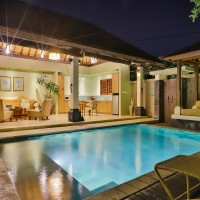One way to help generate a stronger community and culture amongst your workforce is to provide a space where staff can relax and spend time together — an office lounge. Yet, many workplaces struggle to develop engagement with their lounge spaces, as these areas remain empty and unused for months on end.
If your company has an office lounge that is gathering dust, here are a few problems that might be keeping employees away:
The Color Is Off-putting
Many companies try to decorate their office spaces by taking inspiration from their commercial branding, utilizing the bright colors of their logos to bring together spaces where staff work. Unfortunately, rarely does the color psychology employed in marketing to drive sales overlap with the color psychology for increasing relaxation. Though it might seem cohesive to paint the office lounge in the bright red, yellow or purple of the company brand, it is putting off employees who need a space where it is possible to rest and forget their work responsibilities for a brief period.
Fortunately, this has a quick, easy and cheap fix: repaint. Pale blues and greens tend to be more calming than other hues, which is why they are often used in centers of relaxation like spas. However, you might query your staff to determine if there is a color they would most enjoy in their lounge space — or if they have other ideas for the walls, such as murals or wallpaper.
The Temperature Is All Wrong
Often, the office lounge is tucked into a corner of the office that is undesirable for one reason or another. Perhaps the lounge is too close to the server room, which makes the space utterly freezing for most of working hours. Perhaps the lounge is bordered by huge windows, which bring in glorious natural light but also cause the space to heat up like a greenhouse. In any case, if employees cannot feel comfortable as a result of the temperature of the lounge, they are unlikely to linger there.
If you have direct control over the lounge’s temperature through a thermostat, you should do what you can to make the space as comfortable for as many staff members as possible. If the location of the lounge makes it more difficult to manage the temperature, you might install fixtures like a ceiling fan or a electric radiator to improve comfort.
There Is No Comfortable Seating
Too often, companies fill their lounge with plastic tables and folding chairs, which are hardly more appealing than the office chairs employees left at their desks. In a lounge, most people like to slouch and sprawl, which allows them to stretch and relax the muscles they usually use during their work hours. These sitting activities demand more space and support than the typical folding chair can provide.
As soon as possible, you should replace the flimsy furniture in your lounge with more sumptuous seating. Instead of dining tables, you might populate the space with lower coffee tables and end tables, and all dining chairs should be replaced with plush sofas and chairs. You might arrange the seating in different clusters, providing several locations where small groups of employees can meet and bond.
The Décor Is Lacking
Homes that have furniture but no other décor are not particularly welcoming because they lack any style to invite people in. Decorations are not worthless expenses; they help generate intrigue in visitors, who are more likely to come in and explore a space when they have decorative pieces to view. Your own home would be cold and sterile without artwork, rugs, books, plants and other critical elements of décor.
As tempting as it might be to decorate the office lounge according to your aesthetic tastes, you should try to make the lounge a bit more welcoming to all by opting for a more neutral style of décor. Indoor plants are popular in most major interior decorating themes, so you might invest in a number of convincingly fake potted plants — or real plants, if you have a green thumb on staff. You might also cover the drab office floor with comfortable and durable rugs and adorn the walls with decoration — though you might avoid using branded designs in the artwork.
The office lounge should not be a place where employees are bombarded with branding messages or kept more uncomfortable than their cubicles. By investing in simple design elements that improve the employee experience, you should see your company culture flourishing in your office lounge.





